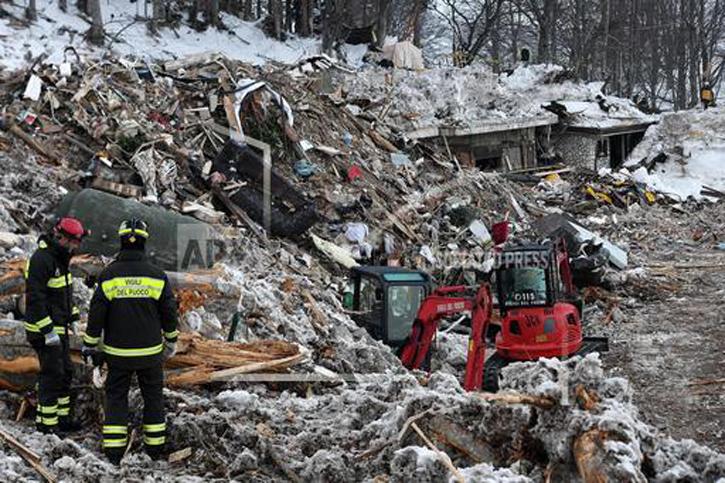Italy avalanche: What caused it?
Scientists debate over whether earthquakes were cause of Italy avalanche
Rescuers look upon ruins of Hotel Rigopiano on Jan. 26.
On Jan. 18, six earthquakes of magnitudes ranging between 4.1 and 5.6 on the Richter Scale struck Penne, Italy, which is nearly 85 miles northeast of Rome. Nearly two hours later, an avalanche occurred on Gran Sasso Mountain, burying the residents of Hotel Rigopiano and killing 29 people. So far, 11 people have been found alive since the event. In addition, skiers enjoying a ride on the slopes were buried under masses of snow. Rescuers have been working during the recent weeks to search for missing people and animals. Many people know of the effects of this avalanche, but the question is: what caused the avalanche?
Central Italy has been prone to earthquakes for a long time. The last earthquake before the avalanche was recorded with a 5.1 magnitude, which other earthquakes have passed up in previous times. For example, in October of 2016, LiveScience reported a 6.2 magnitude earthquake that left no fatalities; however, with an increase of 0.1 in magnitude, an earthquake in 2009 left 300 people dead. These earthquakes are significantly higher than the ones believed to have caused the earthquake, which made scientists want to investigate further.
When looking at the situation, one may assume that the previous earthquakes initiated the avalanche; however, that is not the case for this scenario, according to Jordy Hendrikx of Montana State University. He states that whenever an earthquake is linked to an avalanche, the two events occur simultaneously or within short amounts of time of each other. Since these earthquakes happened two hours before the avalanche, scientists were left again needing to research whether or not the earthquakes were the sole cause of this disaster.
An important contributing factor is that this region had significant snowfall before the avalanche. By the time of the avalanche, three feet of snow had accumulated. Whenever extreme snowfall occurs, an icy layer can form underneath, making it possible for the top layers of snow to slide off of the mountain.
This kind of avalanche called a “slab avalanche,” needing a specific slope of at least 30 degrees in order to actually slide. Gran Sasso Mountain has slopes of up to 45 degrees. Lastly, the previous earthquakes may have triggered a movement in the ice and snow, causing it to collapse. All of these factors lead to the avalanche, not just the earthquakes.
Many news sources jumped at the opportunity to release the most up to date information after the avalanche. Headlines implied or expressed that the previous earthquakes were the sole cause; however, the earthquakes were most likely only one third of the reason for the avalanche. In conclusion, a combination of snowfall, the slope of the mountain and the earthquakes triggered the deadly disaster in Penne, Italy on Jan. 18th.



